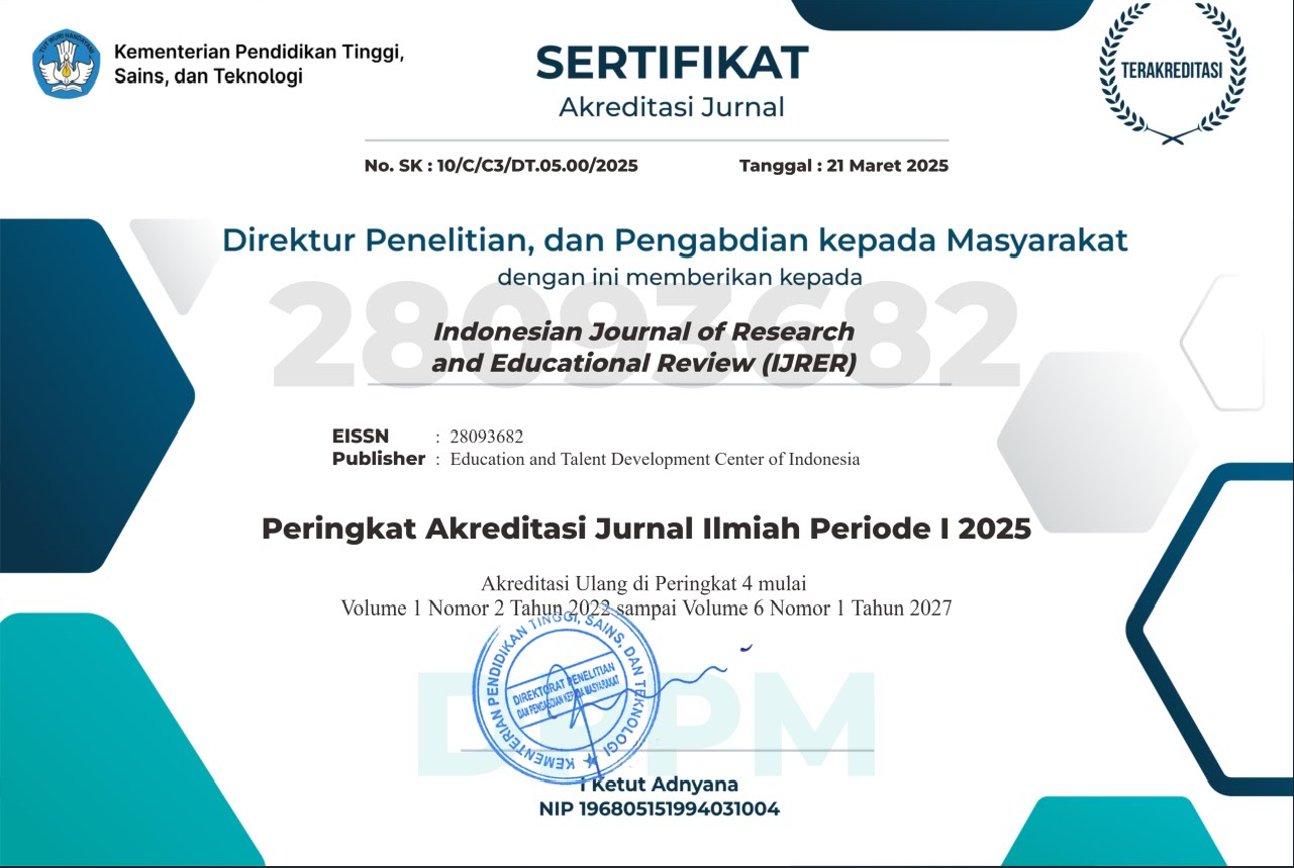The organization shown below should be followed (in the order given):
a. Title of the paper (title case, 14 pt, bold, centered)
b. Author name(s) (12 pt)
c. Author affiliation(s) (10 pt)
d. Address(es) of the institution(s) at which the work was performed (10 pt)
e. Name, postal and e-mail addresses, and phone and fax numbers of the corresponding author to whom the revision or galley proofs of the paper are to be sent. (10 pt)
The title should be brief and should not exceed 20 words. The affiliation address for each author should be indicated by superscript Arabic numbers (1, 2, 3, etc.).
Abstract (10 pt, bold)
Articles must include an abstract of 200 words or fewer. The abstract should not repeat the information already present in the title.
The abstract should be written in English and in Bahasa Indonesia.
Keywords (10 pt, italics)
Immediately after the abstract, provide a maximum of 5 keywords written in alphabetical order. Please avoid general terms, multiple concepts (avoid, for example, and or of), and abbreviations. Only abbreviations firmly established in the field are eligible.
Introduction (12 pt, bold)
The Introduction presents the purpose of the studies reported and their relationship to earlier work in the field. It should not be an extensive review of the literature. Use only those references required to provide the most salient background to allow the readers to understand and evaluate the purpose and results of the present study without referring to previous publications on the topic.
Methods (12 pt, bold)
The Methods sections should be brief, but they should include sufficient technical information to allow the experiments to be repeated by a qualified reader. Only new methods should be described in detail. Cite previously published procedures in References.
Results and Discussion (12 pt, bold)
The Results should include the rationale or design of the experiments as well as the results of the experiments. Results can be presented in figures, tables, and text. The Discussion should be an interpretation of the results rather than a repetition of the Results.
Conclusion (12 pt, bold)
The Conclusion should contain the confirmation of the problem that has been analyzed in result and discussion section.
Acknowledgments (12 pt, bold)
Place Acknowledgments, including information on the source of any financial support, received for the work being published.
References (12 pt, bold)
The References section must include all relevant published works, and all listed references must be cited in the text.
References should be written in the order of they appear in the text.
Within the text, cite listed references use APA style, by their author last name and year (e.g., Husnussalam (2010)). The author(s) must check the accuracy of all cite listed reference, as the IJRER Journal will not be responsible for incorrect in-text reference citations.
Follow the styles shown in the examples below for books, specific chapters in books, and journal articles, respectively:
- Madigan, M.T., Martinko, J.M., Stahl, D.A.,Clark, D.P. (2010). Brock Biology of Microorganisms, 13th ed. Benjamin Cummings. San Francisco. pp. 42-59.
- O’Brien, P., Revaprasadu, N. (2013). Solid-State Materials, Including Ceramics and Minerals. In Reedijk, J., Poeppelmeier, K. (eds.), Comprehensive Inorganic Chemistry II, 2nd ed. Elsevier. United states. pp.xxii-xxiv.
- Kwon, J. W and Kim, S.D. (2014). Characterization of an antibiotic produced by bacillus subtilis JW-1 that suppresses Ralstonia solanacearum. J. Microbiol. Biotechnol. 24(1): 13-18, http://dx.doi.org/10.4014/jmb.1308.08060.
References to papers accepted for publication but not yet published should show the journal name, the probable year of publication (if known), and they should state "in press."
The following types of references are not valid for listing in the References section:
- Unpublished data
- Personal communication manuscripts in preparation or submitted pamphlets
- Abstracts
- Patents
- Newsletters
- Material that has not been subjected to peer review.
References to such sources should be made parenthetically in the text (e.g., J.J. Favier et al. (1986). Abstr. Proceedings of the Eight International Conference on Crystal Growth, York, UK, p. 50).
All submitted papers in IJRER Journal are suggested using Reference management applications such as Mendeley, Zotero or EndNote.
Tables
Tables should be typewritten separately from the main text and preferably in an appropriate font size to fit each table on a separate page. Each table must be numbered with Arabic numerals (e.g., Table 1, Table 2) and include a title. Place footnotes to tables below the table body and indicate them with superscript lowercase letters (a, b, c, etc.), not symbols. Do not use vertical rulings in the tables. Each column in a table must have a heading, and abbreviations, when necessary, should be defined in the footnotes.
Figures
Figures should be provided separately from the main text. Use Arabic numerals to number all figures (e.g., Figure 1, Figure 2) according to their sequence in the text. The figure number must appear well outside the boundaries of the image itself. Multipart figures should be indicated with uppercase and bold font letters (A, B, C, etc.) without parenthesis, both on the figure itself and in the figure legends.





















